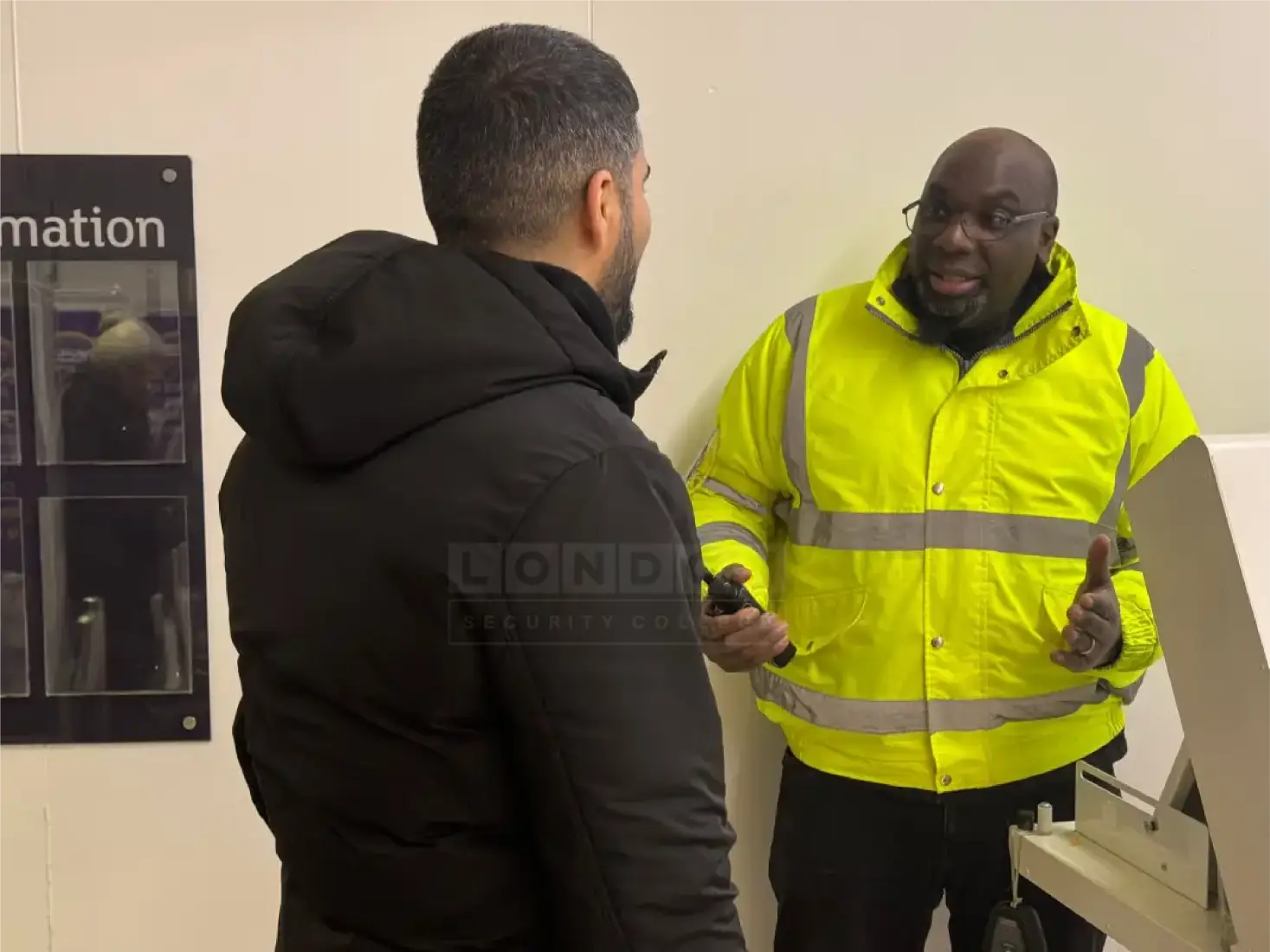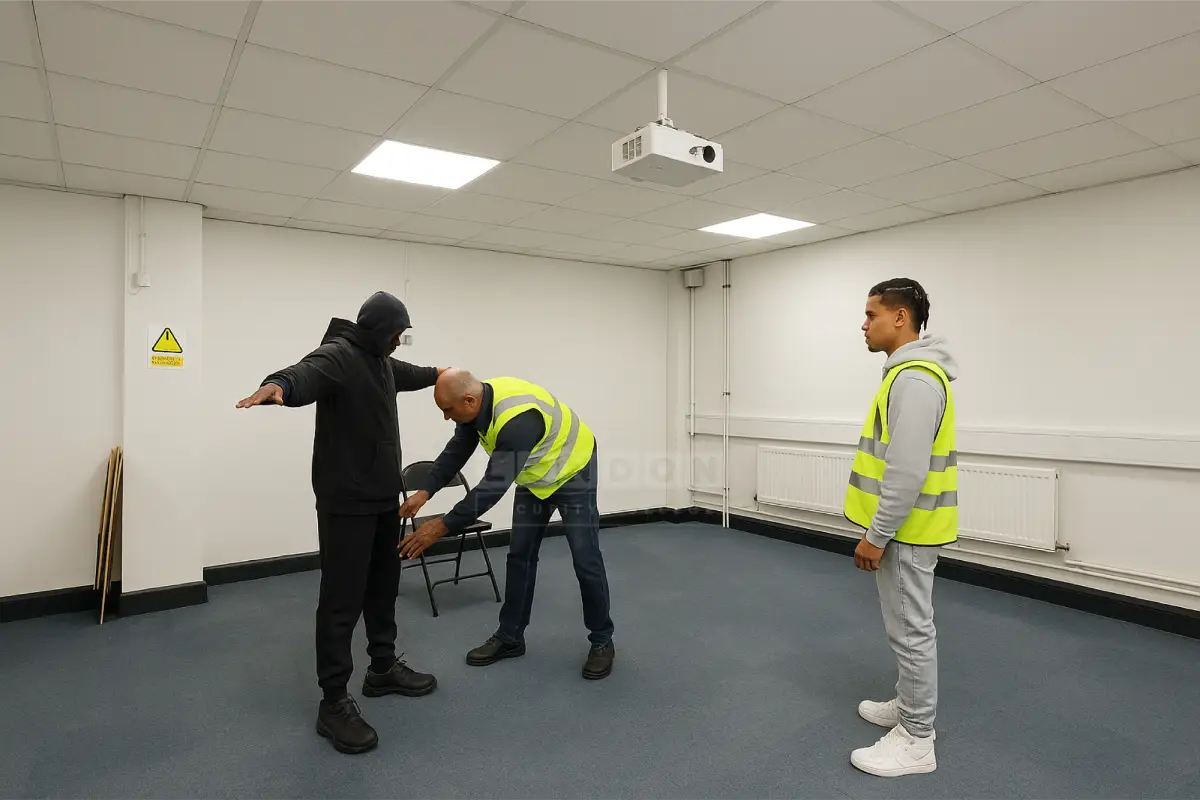
How Security Control Rooms Play a Critical Role in Responding to Terrorist Incidents
By London Security College Is Your Licence Near to Expire? SIA Refresher Training + First
Home » Understanding S.A.F.E.R and A.S.C.O.N.E
By London Security College
SIA Refresher Training + First Aid– Keep Your Licence Active! Only £199
As a retail security officer, you’re not just there to protect the store; you play a key role in creating a safe, welcoming environment for staff and customers. Whether preventing theft or calming down a tense situation, how you handle things matters. Acting with professionalism, respect, and within the boundaries of the law is essential.
Here’s a clear breakdown of the steps you should follow to deal with incidents effectively and responsibly:
In any conflict or tense situation, you must stay calm and collected. The S.A.F.E.R. approach helps you manage situations without escalating them.

S – Stepping back: Before reacting, take a physical and mental step back. This gives you time to assess the situation and avoid making hasty decisions. Distancing yourself, even momentarily, allows you to think more clearly and rationally.
A – Assess the situation: Look for potential dangers. Is there a threat to your safety or the safety of others? This assessment helps you decide the best way to respond.
F – Find help: In many situations, you might not be able to handle things alone. Think about who can assist you. This could be the store manager, another security officer, emergency services, or a nearby customer.
E – Evaluate options: Before you act, consider all possible options. Is there a way to de-escalate without confrontation? Could you ask the person calmly about their actions instead of accusing them outright? Weigh the risks and benefits of each action.
R—Respond appropriately: Once you have assessed the situation and evaluated your options, act safely and professionally. Your response will depend on the seriousness of the problem but always act within legal and company guidelines.
Always document and report any incidents involving abuse, injuries, or near-misses.
As a security officer, using force is only allowed when absolutely necessary. You should only use force if:
The force you use must be reasonable—using the minimum force required to handle the situation. For example, if someone is being aggressive but not physically threatening, you should try verbal de-escalation before considering physical intervention.
To reduce the chances of conflict or to make a wrongful stop, follow the A.S.C.O.N.E. process before stopping someone for suspected theft. This process helps you confirm whether a person has intentionally stolen an item:

A – Approach: Watch the customer as they approach an item. If they seem to be behaving unusually or nervously, keep an eye on them.
S – Selection: Once the customer selects the item, note what they do with it. Do they handle it usually, or are they acting in a way that raises suspicion?
C – Concealment: If you see the customer hide the item (in a pocket, bag, under a trolley, etc.), this is a key step in determining their intent. However, just seeing someone put an item in their bag doesn’t confirm theft—some people carry items before paying.
O – Observation: This is crucial. Maintain complete observation of the customer from when they select the item until they leave the store. Losing sight of them even for a second could lead to mistakes, as they could discard the item without you seeing it.
N – Non-payment: Watch as the customer moves through the checkout area. If they walk past the tills without paying for the item and show no intention of paying, it becomes clear that theft may occur.
E – Exit: Once the customer passes all points of sale and is heading towards the exit, you can approach them. At this point, the theft is considered to be in progress, and you have grounds to stop them.
For A.S.C.O.N.E to be valid, you must observe the entire process from start to finish. If you lose sight of the customer at any point, you cannot make a stop.
If you stop someone who is a child or juvenile, you have a duty of care toward them. The legal definition of a child or juvenile varies slightly:
Children or juveniles must only be allowed to leave the store if they are handed over to an appropriate adult.
This could be:
If you are unsure how to handle the situation, always refer it to your line manager or the store manager.

By London Security College Is Your Licence Near to Expire? SIA Refresher Training + First

By London Security College Is Your Licence Near to Expire? SIA Refresher Training + First

By London Security College Is Your Licence Near to Expire? SIA Refresher Training + First

By London Security College Is Your Licence Near to Expire? SIA Refresher Training + First


Fill in the form below
3 thoughts on “Understanding S.A.F.E.R and A.S.C.O.N.E”
These are guidelines not an accurate assessment of the legal situation. Also one important caveat is you cannot SEARCH ANYONE or their belongings without their permission.
You’re absolutely correct— Thank you for pointing this out; we will look to rewrite this blog.
I provided practical guidelines rather than a precise legal assessment of the situation. Let me clarify a key point: As you mentioned, UK security officers do not have the legal right to search anyone or their belongings without permission. This is a critical legal distinction that must be followed at all times.
To address this more accurately:
Consent for Searches: As a security officer, you must always obtain explicit consent from the individual before conducting any search of their person or belongings. If the person refuses, you cannot proceed with the search. You should inform them that refusing the search may result in the police’s involvement.
No Legal Right to Search: Under UK law, only police officers can search individuals and their belongings without consent under certain circumstances (such as being suspected of carrying illegal items). Security officers do not have this power, and attempting to search someone without their permission could lead to legal consequences for the officer and the business they represent.
Bag Checks: If your company policy allows bag checks as part of loss prevention, these must still be done with the individual’s consent. If the customer refuses to check their bag, you can politely inform them that you cannot allow them to leave with the item in question, but you cannot forcibly search.
If you have evidence of theft but the individual refuses a search, the correct procedure is to ask the person to wait while you call the police, who can then handle the situation lawfully.
This is an essential legal caveat, and all security officers need to understand and respect the limits of their authority in this regard.
Excellent and concise assessment of the legal situation.